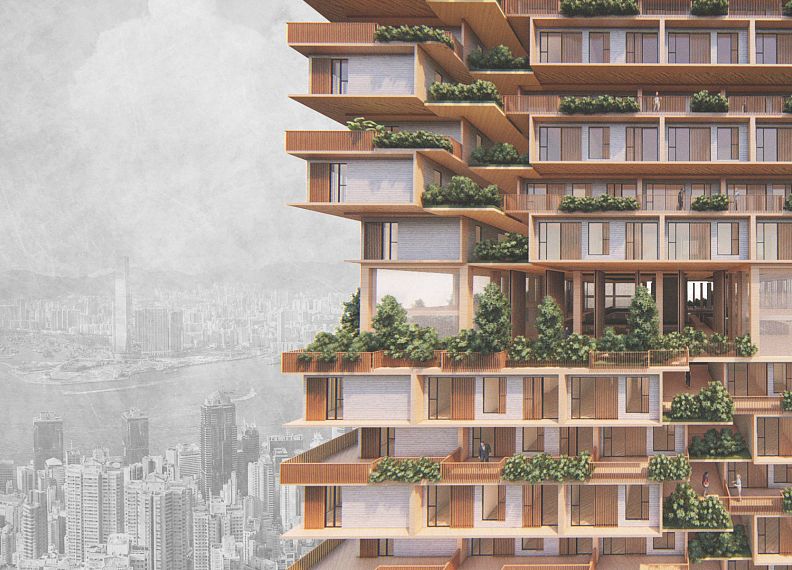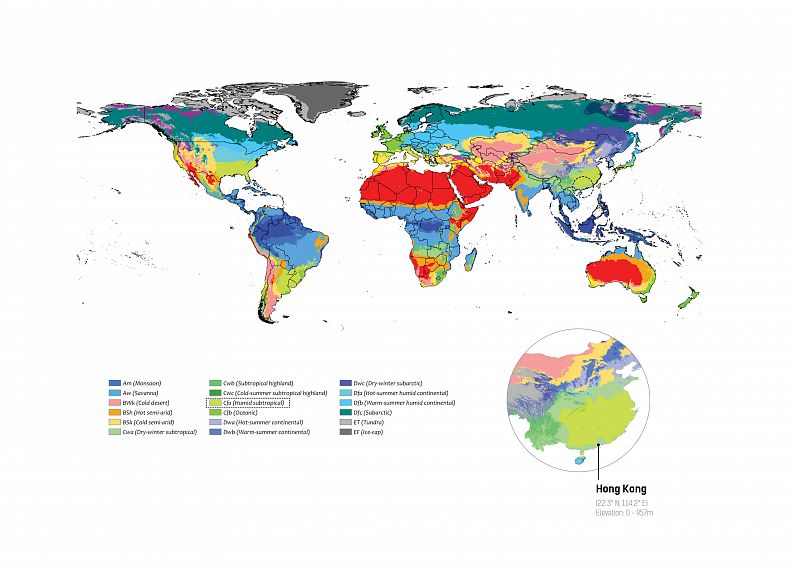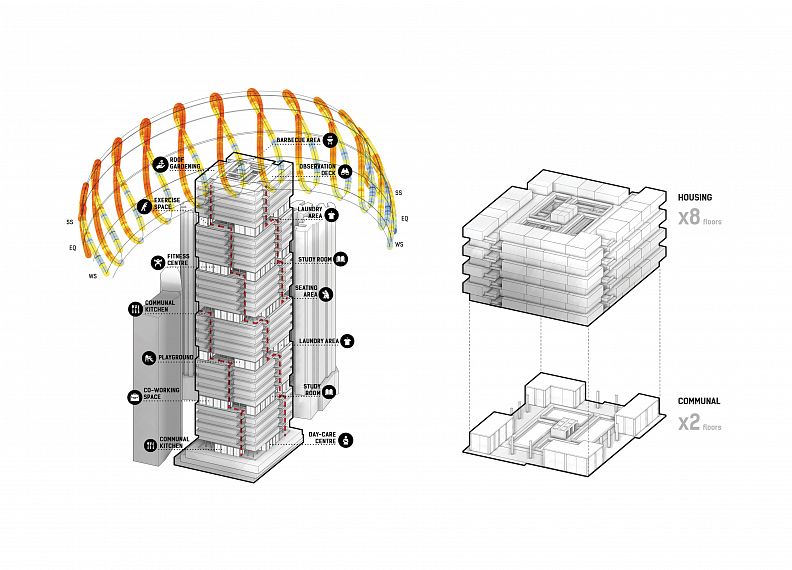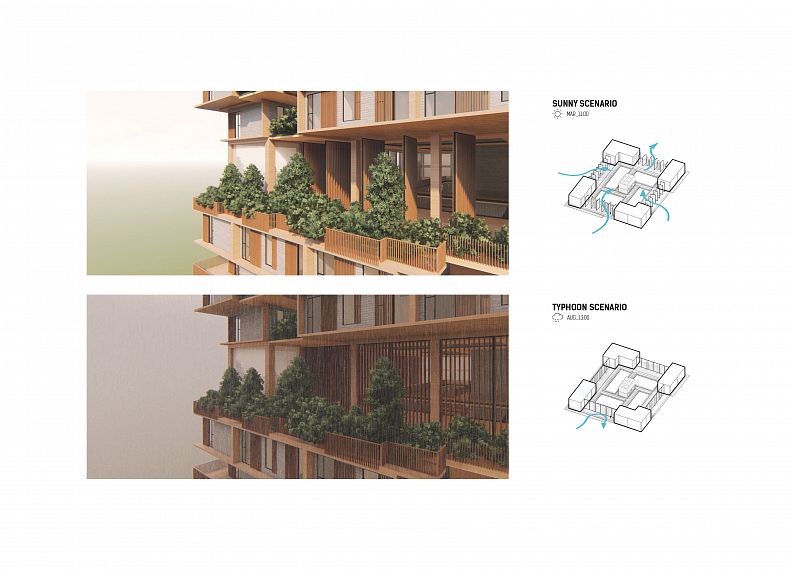Breathable Density

Project idea
Hong Kong’s rapid population growth and land scarcity have led to an increase in urban densification. However, these solid extrusions produce repetitive and homogeneous towers that remove cities’ ability to ventilation, despite the incredible densities they achieve. This further cause rising temperature in the city and will lead to the acceleration of global warming. As Hong Kong gets hotter each year, urban inhabitants rely more and more on mechanical cooling to stay in comfort. Therefore, a new approach is needed to create more open and breathable habitats that not only benefit occupants, but also the urban environment in the future. This project aims to re-imagine the future of high-rise living in Hong Kong.
Project description
Pre-design research focuses on the understanding of urban morphology in Hong Kong through a social and cultural context.
Climate analysis is conducted to explore local climate data with a focus on factors that influence human thermal comfort and seasonal and diurnal variations. This helps identify specific passive design strategies suitable for hot and humid climate.
Initial design concept is then developed based on lessons from research and climatic data analysis.
Analytical work is conducted to develop effective design strategies, specifically in the context of Hong Kong. The process involves comparative analysis at different scales of design using parametric computational studies.
Finally, a design proposal is developed as an alternative approach for future high-rise living. This project aims to be a case study for future developers to encourage deeper integration of sustainability in Hong Kong.
Technical information
The proposed design responds to the surrounding context by shifting the mass away from neighbouring buildings to minimize daylight obstructions while achieving high density. The tower is deconstructed into smaller segments to allow better natural ventilation within the building. This reduces the need for mechanical cooling. Moreover, floorplans are pushed and pulled to create folding facades. This allows the building to self-shade and reduce overheating of internal spaces. To re-kindle Hong Kong’s neighbourhood living (Kai-Fong) that have been lost due to urbanization, communal programs are vertically distributed, creating pockets of community within the building. The tower is designed with modularity in mind to allow ease of construction. Cross-laminated timber (CLT) is used as a main structural element as it is one of the most sustainable materials with low embodied carbon when compared to traditional construction materials such as concrete and steel.
















